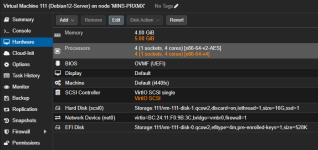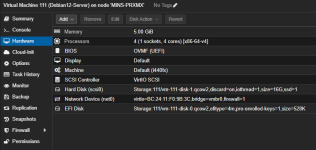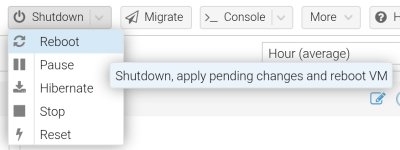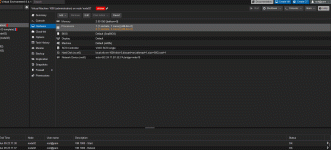Can we please agree that multiple interpretations of that (short natural language) sentence are possible?
Agreed. I wrote "implies" for that reason.
interesting, does the new version of QEMU executable really not get used during the start of the new process?
Yes, I tested it personally, even with a GA.
Some VMs, especially those without an OS installed or which are wrongly configured (so that it does not boot), don't respond to a Shutdown (unless it times out and does a Stop eventually), and therefore respond badly to a Reboot.
While I have had the same experience, in these (rare) instances I prefer the on-hand experience of totally stopping the VM & starting again fresh.
Anyway, I do think this semantic discussion is relevant. OP ask for a button that does Stop followed by a Start, like Reboot does a Shutdown followed by a Start.
I totally agree that even semantical conversations are often very useful to the further enhancement of the subject being discussed.
In my opinion, I think labels/buttons should closely match AMAP "what it says on the label". So
Reset is just that. I don't think anyone on a PC used the Reset button while changing his HW.
If some users really want a
Power Cycle button, let that button be so labeled. (While the user may gain a click or two, I wonder how many "clicks" the programming will take!) As I've said above; I don't need it nor would I use it - BUT I'm not the only user on this planet!
I did not expect this to escalate into a semantics discussion so quickly and I'm sorry if I caused it.
I ALWAYS enjoy any input you have (and also learn from it). Sorry is inappropriate here.
I am not convinced that @janus57 actually had an operating system booted up first and as well he was not using UEFI he was using BIOS. When I booted netbootxy under UEFI and then changed the SCSI controller a reboot nor a reset applied that hardware change.
I had an OS running when I tried it.
I tested (again) with a fully running Debian server VM UEFI (& GA) - all changes are picked up on
Reboot:


It is not just a semantic difference it is a FUNCTIONAL difference to be desirous of a power cycle option.
I am in no position to argue with your personally experienced use-case of needing this function. I can only say (as above) that I don't need it.
adding power cycle option would simply add new functionality
And should be so labelled:
Power Cycle
I'd also be open to having a configuration option where in a VM avoids or forces a confirmation if a power cycle is requested.
If you mean within the VM - I don't see that happening. In a niche-case of a presumably non-running or non-responsive VM, we can't expect this functionality. If however you mean within PVE concerning the power-cycling of the VM - I believe confirmation is definitely desirable.





